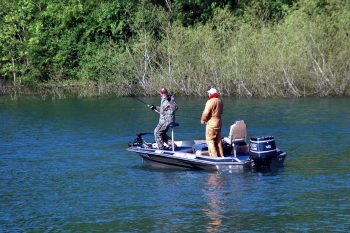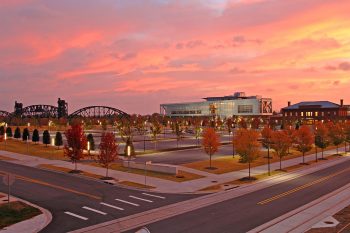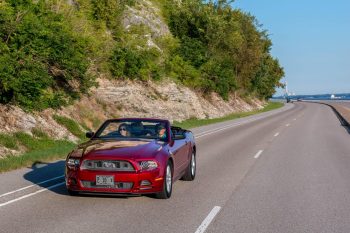View Minnesota wolves, bears, birds and other wildlife at three unique destinations in Ely: The International Wolf Center, North American Bear Center and Bear Head Lake State Park.
International Wolf Center
Gray wolves once roamed freely across much of the United States, but due to over-hunting, deforestation and other reasons, the country’s wild wolf population has dwindled to a fraction of its former size. Today, there are few places in the U.S. where gray wolves still flourish. Minnesota is one of them.
Home to the largest wolf population in the lower 48 states, the Superior National Forest surrounding Ely serves as a majestic backdrop for the International Wolf Center.
The center maintains a life wolf exhibit with four resident wolves: Aidan, Denali, Boltz and Luna. Center visitors can watch them hunting, playing and sleeping, from a large indoor area that looks out onto their wooded habitat.
Programs spotlight wolf feeding and communication, giving visitors a chance to howl with the wolves. The exhibit “Wolves and Humans” shows wolf behavior and lore and threats to the wolf’s survival. A children’s exhibit replicates the den of a pup named Little Wolf and tells the story of his first year of development.
The International Wolf Center is open daily through late October, and Friday-Sunday until mid-May.
North American Bear Center
The North American Bear Center offers insights into the lives of the black bears that roam Minnesota’s northern woods. From the center’s observation windows, visitors can watch three bears that live in a large wooded enclosure. A male, Ted, is the largest black bear in Minnesota, weighing more than 850 pounds. Honey is a brown female bear, and Lucky is a younger male.
In addition to the live bears, several televisions in the center run extensive footage featuring “undisturbed bears doing their own thing in the woods around Ely.” The videos and exhibits portray bear body language, courtship behavior, life in a bear den, care of young cubs, and bear play. Visitors can listen to bear growls, moans, grunts and other sounds and learn what they signify. They can see the many berries and other vegetation that bears eat. A television documentary about black bears is shown in the theater.
The Cub Room uses kid-friendly activities to teach children about bears. In an artificial bear den, kids watch a video of a biologist doing field research on bears. Then, the kids serve as junior biologists who tranquilize teddy bears, weigh and measure them, and put on a radio collar for bear tracking. There are books parents can read to their children, and touch-and-see exhibits, where visitors can feel bear fur.
The focus is on black bears, but there is also information on grizzlies and how they differ from black bears. There are two mounts of grizzly bears and photo exhibits on black bears and grizzly bears. There’s even a full skeleton of a prehistoric short-faced bear.
From the center windows and observation deck, visitors can watch three live bears—a massive male, a honey-colored female and an orphaned cub—in a large wooded enclosure with a pond. Inside, there are updated field notes and video footage from current research on wild bears around Ely.
The Bear Center is open daily May-late October, and Fridays and Saturdays in February-April. It is closed in December and January.
Bear Head Lake State Park
To see native animals in the wild, visit Bear Head Lake State Park, 15 miles (24km) southwest of Ely. Hiking along trails and roads in this forested park, visitors may see white-tailed deer, black bear, moose, wolves and snowshoe hares. The park also features nesting bald eagles, red-breasted nuthatches, pine grosbeaks, red crossbills and chickadees. The park’s several lakes offer canoeists the chance to spot wildlife from the water and fish for trout, walleye, bass or crappies.
The park has 73 drive-in campsites with electric hookups and hot showers nearby, as well as several remote hike-in sites and one accessible only by boat. Several trails loop through particularly gorgeous country, some of it fairly rugged. One of the trails intersects with the 165-mile (265km) Taconite Trail between Grand Rapids and Ely.




